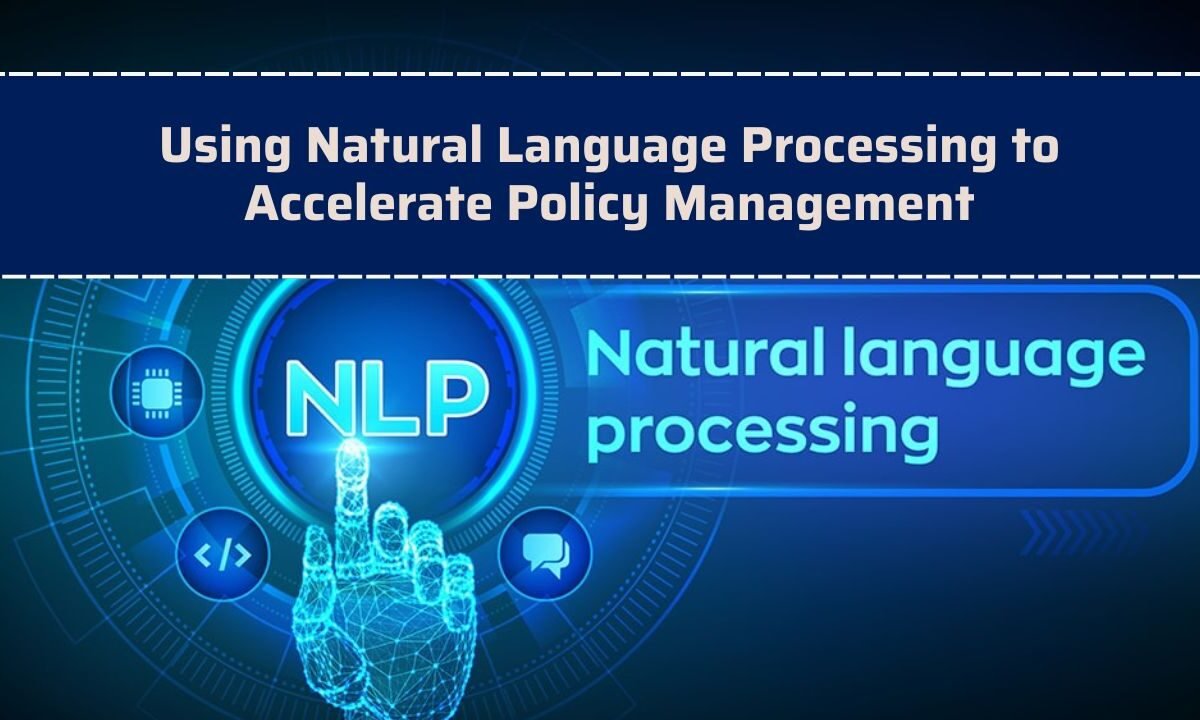In today’s data‑driven world, policy management is increasingly complex—spanning drafting, analysis, reviewing, compliance, and monitoring. Enter Natural Language Processing (NLP), a powerful AI tool that understands human text and accelerates policy workflows.
This article explores state‑of‑the‑art developments: from automated policy drafting and access‑control translation to real‑time monitoring and evidence‑based governance. It delivers practical details and figures, structured for clarity and SEO optimization with bolded keywords.
Understanding NLP in Policy Management
Natural Language Processing (NLP) enables machines to interpret and manipulate human language. Advanced transformer models, including GPT-4, Claude, and Gemini (foundation models), offer multitasking abilities like summarization, reasoning, and question answering—crucial for interpreting complex policies.
Key techniques include:
- Text classification: Assigning documents to relevant categories.
- Topic modelling: Discovering hidden themes.
- Event extraction: Identifying policy‑relevant events.
- Text scaling / score prediction: Placing text along ideological or regulatory spectrums.
- Summarization and Q&A: Digesting long documents and answering queries succinctly.
Modern NLP Trends Empowering Policy Workflows
| Trend / Innovation | Description & Impact |
|---|---|
| Large Language Models (LLMs) | Models like GPT‑4, Claude, Gemini offer human‑like comprehension and reasoning . |
| NLP Market Growth | Global NLP market expected to reach $53.42 billion by end of 2025, with a yearly growth of ~24.76%, and $201.49 billion by 2031 . |
| Cross-Industry Models | Pre-trained models simplify policy analysis—automated workflows, multilingual operations, compliance automation. |
| Toolkits for Developers | Top tools in 2025 include Kairntech (secure on-prem), spaCy, NLTK, Hugging Face Transformers, Stanford CoreNLP, TextBlob . |
| Scalable Processing | Spark NLP offers scalable, production-grade pipelines with pre-trained models, built over Apache Spark. |
Real-World Use Cases: NLP Transforming Policy Management
Access Control Automation
A 2025 IEEE paper demonstrated how LLMs can translate natural‑language specifications into formal access control policies, improving the efficiency and accuracy of policy extraction via prompt engineering .
Regulatory Monitoring & Intelligence
Gnowit, a Canadian company, applies NLP for near-real-time monitoring of legislative and regulatory developments—ingesting millions of documents daily and generating structured alerts. They also introduced “PolicyInsight,” combining LLMs and knowledge graphs to detect policy changes and support smart retrieval and Q&A .
Automated Policy Analysis & Computational Tools
NLP4Gov (2024), a comprehensive NLP library, converts policy text into semantic and symbolic representations—facilitating computational policy analysis and comparisons across institutions .
Privacy / Compliance Policy Processing
Surveys in early 2025 highlight NLP’s role in making privacy policies more usable, reducing manual scrutiny .
In another case, a tool named PoliGraph-er uses knowledge graphs and NLP to extract policy relations, achieving 97% precision and identifying 40% more collection statements compared to previous tools.
Corporate Compliance Automation
NLP automates compliance tasks: contract analysis, policy reviews, continuous compliance tracking, and fraud detection—reducing errors and boosting productivity.
Financial services use NLP to streamline regulatory processes—converting communication into structured data for quick analysis .
Real‑time compliance reporting is enhanced by NLP, facilitating timely adherence and cost savings.
Evidence-Based Policymaking & Public Sentiment
Governments use sentiment analysis to monitor public opinion on policies—via social media, surveys, news articles—enabling responsive adjustments and engagement .
Environmental & Land Policy Analysis
NLP transforms unstructured environmental documents into actionable matrices—helping accelerate policy analysis for initiatives like land restoration.
Central Banking & Research Efficiency
Australia’s Reserve Bank (RBA) uses an NLP‑powered tool, RBAPubChat, to extract insights from 40 years of documents (~200,000 analytical reports). In parallel, NLP analyzes 25 years of liaison notes—transforming text into data for analysis—although policy decisions remain human‑driven .
Benefits and Value of NLP in Policy Management
- Efficiency Gains: Automates drafting, analysis, monitoring, and compliance—allowing teams to focus on strategic decisions.
- Enhanced Accuracy: High precision tools (e.g., 97% in PoliGraph), and context-aware analysis reduce mistakes.
- Scalability: Handles vast datasets—from decades of documents to real‑time legislative feeds.
- Cost Savings: Cuts manual labor and compliance penalties.
- Realtime Responsiveness: Enables swift adaptation through sentiment-tracking and regulatory changes.
- Better Governance: Supports evidence-based policymaking and transparent public engagement.
Challenges and Ethical Considerations
- Bias & Fairness: Language models may reflect biases; rigorous evaluation is essential.
- Transparency: Many NLP/LLM models lack explainable reasoning—critical for policy compliance.
- Privacy & Security: Handling sensitive policy data requires secure infrastructure and confidentiality.
- Data Quality & Integration: Poor document quality or fragmented archives hinder analysis.
- Legal & Ethical Oversight: Ensuring tools augment—not replace—human judgment remains imperative.
Natural Language Processing is revolutionizing policy management—from drafting and compliance to public engagement and monitoring.
By combining LLMs, knowledge graphs, and specialized AI tools, institutions can achieve precision, speed, and insight at an unprecedented scale. Real-world examples—from RBA’s RBAPubChat to Gnowit’s monitoring platform—demonstrate tangible benefits.
Yet, ensuring ethical deployment, fairness, and human oversight is essential. As NLP evolves, policymakers who embrace AI thoughtfully will lead in crafting smarter, more responsive governance frameworks.
Expanded Information Overview
| Domain | 2025 Advances | Impact |
|---|---|---|
| Market Scale | USD 67.8B (2025); projected USD 247B (2030) | Explosive adoption, especially in policy/legal sectors |
| NLP Tools | OpenNLP 2.5.3; Spark NLP 5.2.3 | Scalable, multi‑language pipelines |
| Transformer Models | GPT‑4, Gemini, RAG, domain LLMs | Stronger reasoning, multimodal, accurate policy interpretations |
| Explainable NLP | Industry study shows need for better transparency | Critical for policy trust and validation |
| Central Bank Tools | RBA RBAPubChat & WHAM! module | Data-driven policy insights, not decisions |
| Regulatory Monitoring | Gnowit, PolicyInsight | Near‑real‑time alerts and intelligence |
| Privacy Analysis | LLM classifiers with >91 % explainability; PolicyLR logic model | Automates privacy compliance & comparisons |
| IoT Policy Tools | LACE: 100 % generation accuracy; F1 0.79 | Secure and intuitive policy authoring |
| Web Interfaces | NLWeb for natural‑language site queries | Conversational access to policy content |
| Government Adoption | UK’s Humphrey, India’s ChatGPT ban, Poland’s PLLuM | Mixed—pragmatic caution meets experimentation |
FAQs
LLMs interpret natural-language policy descriptions and convert them into formal access-control formats (e.g., ABAC), using prompt engineering to boost accuracy and precision

